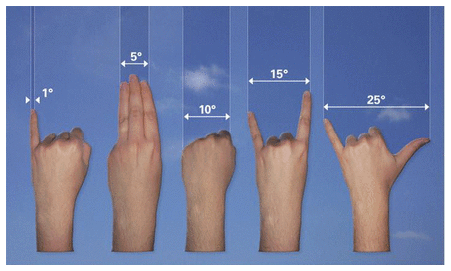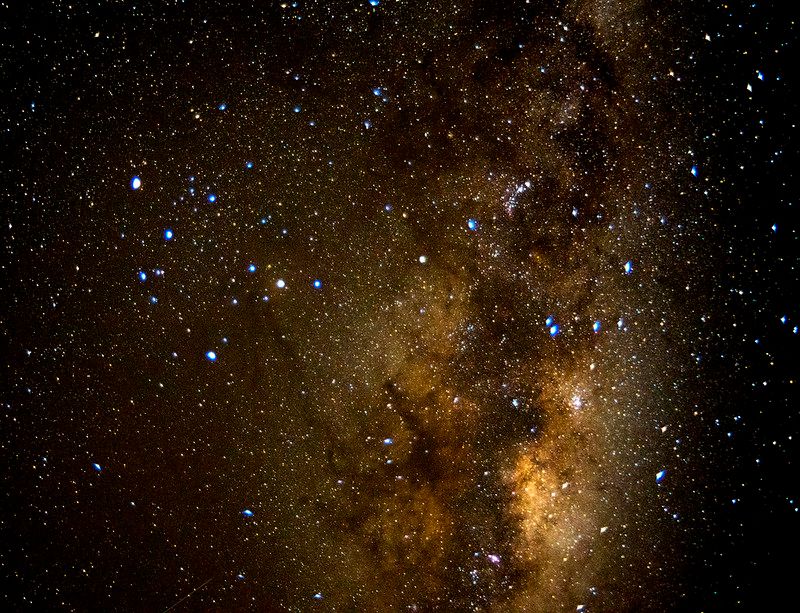Home/Curriculum resources/Stellar navigation and mathematics/Activity 1 - Measuring angles with your hands and fingers
Learning Area:
Mathematics
Year level:
Level 5
Suggested timing:
10-15 minutes
Required resources:
Clips of Moana, or a copy of the film

Activity 1 - Measuring angles with your hands and fingers
This activity is a part of the Stellar navigation and mathematics resource.
Tarantula Nebula. Photographer: Peter Lieverdink. Source: Flickr. Licence: CC BY-SA 2.0
Students will learn how to measure angular distances in degrees using their hands and fingers as makeshift protractors.
Step by Step guide
In this activity, students will learn how to use their hands and fingers as protractors to measure angular distances between objects in degrees. The first in-class activity will provide students with the tools they need to conduct their own experiment outside.
Teach the students how to use their hands and fingers to measure angular distances in degrees. By holding your hand out at arm’s length, the width of your little finger is about 1°. For reference, the diameter of the Sun and Moon are about half a degree. Three fingers is about 5°, a fist is 10°, and so on.

Figure 3. Hands to measure distance. Image: Fort Worth Astronomical Society. Used with Permission.
Teacher notes: If students have seen the Disney film Moana, the teacher can discuss how Moana used a similar technique in the film. 0
Students should develop their own mnemonic (memory aide) for remembering which hand measures what angles.
Students then practice measuring angular distances (height, width, etc.) in the classroom. They can use combinations of their fingers to measure the height or width of a door, window, chalkboard, building, etc. Students nearer the object being measured will measure larger values than students further away. This will enable them to estimate, measure and compare angles using degrees, using their hands as a protractor.
This introduces students to estimating, measuring, and comparing angles in units of degrees, using their hands and fingers as a protractor (ACMMG112).
Related activities within this resources:

What is Stellarium?
Discover Stellarium, a digital planetarium that offers a vivid depiction of the night sky worldwide, showcasing the celestial dance of the Sun, Moon, planets, and stars in real-time.

Activity 2 - Finding the South Celestial Pole using the Southern Cross
Aboriginal and Torres Strait Islander People used a variety of techniques to find cardinal points. In this activity, students will learn how to find the South Celestial Pole using the Southern Cross, as Aboriginal people did in the past. It will require teachers to familiarise themselves with the Stellarium astronomy software program beforehand.
Suggested timing:
30-45 minutes

Activity 3 - Estimating latitude by measuring the altitude of the South Celestial Pole
As a revision activity, students will be asked to use the knowledge and techniques they've developed to apply to their own burgeoning star-gazing practice.
Suggested timing:
Student’s own time / homework

Activity 4 - Using the Sun to Find Cardinal Directions
In this activity, students can use a stick and the sun to find cardinal directions
Suggested timing:
30 mins to 1 hour
Required resources:
A stick / stake